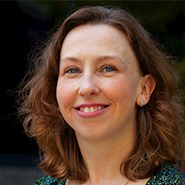
By Tara Hoke
While much of the focus of A Question of Ethics columns is on the work of ASCE’s Committee on Professional Conduct, the CPC is not the only group in ASCE charged with investigating ethical concerns. This issue’s column highlights the important, if sometimes challenging, work of ASCE’s volunteer editors and publications staff to protect the integrity of the Society’s technical content.
Situation
A recent graduate contacts ASCE claiming that a former professor of his published his research paper in a Society journal without his knowledge or permission. What’s more, the professor had also listed the graduate as the second author on the paper while inserting his own name first.
The complainant explains that he had obtained a Master of Science three years earlier from a civil engineering program at a large U.S. university. While the degree was from a non-thesis program for students aiming to enter the engineering workforce rather than to pursue a doctorate degree, the program nevertheless required students to complete a sizable research paper prior to graduation.
The professor had served as the student’s advisor on his final research paper, but the student claims that the professor had not conceived, written, nor even substantially edited the student’s paper; the student had prepared the paper entirely on his own. As evidence of his claim, he, an ASCE member, submits a copy of his graduate paper along with a signature page documenting acceptance of the paper by the professor and other members of the master’s program faculty.
Comparison of this document with the published journal paper reveals a substantial amount of duplication. The abstracts for the two papers are nearly identical, and all but a few scattered sentences in the journal paper appear to have been lifted word-for-word from the student’s paper. Indeed, the published submission appears to be little more than an abridgement of the complainant’s graduate paper, summarizing its main points in a more concise format to meet the journal’s word count restrictions for published papers.
A member of ASCE’s publications staff contacts the professor to request a response to the former student’s allegations. Much to their surprise, the professor makes no attempt to deny the facts as alleged by the complainant but instead seems to feel there was nothing wrong about his actions. The professor expresses a strong belief that graduate student work should always be submitted for publication in some format, whether in a technical journal or in conference proceedings, and if a student fails to take the initiative to do so, he considers it the professor’s responsibility to make this happen.
In this instance, when years had passed with no sign that the graduate had taken steps to publish his paper, the professor selected a suitable journal and prepared the paper himself, listing himself as lead author for the purpose of assuming responsibility for the paper’s content and any related queries or discussions.
When pressed about failing to seek consent from the student for the submission, the professor admits that he had not done so because he had lost touch with him after his graduation. The professor acknowledges signing a statement when submitting the paper attesting that all authors had reviewed the final draft and approved it for publication, but he says that he considers this requirement satisfied by the student’s submission of his paper to the university.
Although the professor is not an ASCE member, he has been a regular contributor of technical content to the Society, with nearly two dozen works published in ASCE journals or proceedings over a 20-year period. Among those works, however, are no fewer than six other papers with a concerning similarity to the paper in question; each of these papers lists the professor as first author with a second author identified as a “former graduate student.”
While the journal’s editor and staff are troubled by the possibility of multiple cases of questionable authorship, the Society has little ability to investigate concerns about a nonmember, based on limited evidence and only one actual complaint. In such cases, the Society’s policy is to submit concerns to the author’s institution or funding agency, entities with greater authority to gather evidence and direct remedial action as needed. Accordingly, ASCE staff contacts the research integrity office at the professor’s university for assistance in reviewing the case.
Question
If this professor had been an ASCE member, would his actions violate the ASCE Code of Ethics?
Discussion
At the time this case was submitted, almost 20 years ago, guideline e under Canon 5 of the ASCE Code of Ethics read: “Engineers shall give proper credit for engineering work to those to whom credit is due and shall recognize the proprietary interests of others. Whenever possible, they shall name the person or persons who may be responsible for designs, inventions, writings or other accomplishments.”
If reviewed under today’s code, sections 5a and 5b offer a similar mandate: Engineers must “only take credit for professional work they have personally completed” and “provide attribution for the work of others,” respectively.
In either instance, if this case were presented to the CPC, it might first consider whether the professor’s claim of authorship gave himself more credit, or the student less credit, than was warranted based on their contributions. ASCE’s current guidelines for journal publishing define authorship to include making “significant contributions to the conception, design, development, and execution” of a work, as well as “intellectual contributions to the writing, revising, and editing” of the paper.
Moreover, the position of first author among a list of coauthors is commonly given to the individual who made the most significant intellectual contributions to the work.
The CPC would probably find that a professor whose sole contribution consists of editing a manuscript for length would not meet either of the ASCE authorship criteria, and that by identifying himself not only as an author but also as the lead author, the professor created a false impression that his contributions to the work were greater than his student’s.
The CPC might also examine other ethical implications of the professor’s actions. Failure to provide proper credit often involves an attempt either to pad one’s credentials, violating the engineer’s duty to “represent their professional qualifications and experience truthfully” (Section 3c) or to gain an undue competitive advantage, breaching the directive to “reject practices of unfair competition” (Section 3d).
Here, it could perhaps be argued that a professor with a sizable body of scholarly work had little motive to boost his career via fraudulent author credit, and that he neither intended nor believed that the change of authorship would have any impact on a student who had no interest in pursuing a career in academia.
Yet even presuming the most benign motives for the professor’s decision to publish his former student’s work — a simple desire to benefit the engineering community by distributing useful research content — his actions could easily have caused undue benefit to him or harm to his student.
Given these considerations, if the professor in this case had been an ASCE member, it is likely that the CPC would have deemed him in violation of his ethical obligation to take credit only for his own professional work and to provide appropriate recognition for the efforts of others.
Some months after referring this case to the professor’s university, however, ASCE received word from the university that the professor and his former student had reached an agreement to let the authorship of the paper stand as published.
Furthermore, the university claimed to have found no evidence of misconduct by the professor in any of the other suspect publications. Despite lingering misgivings about this result, the journal honored the university’s findings and closed the case without further action.
Tara Hoke is ASCE's general counsel and a contributing editor to Civil Engineering.
This article first appeared in the May/June 2025 issue of Civil Engineering as “Tangled Bylines: Civil Engineers Must Give Credit Where It Is Due.”



